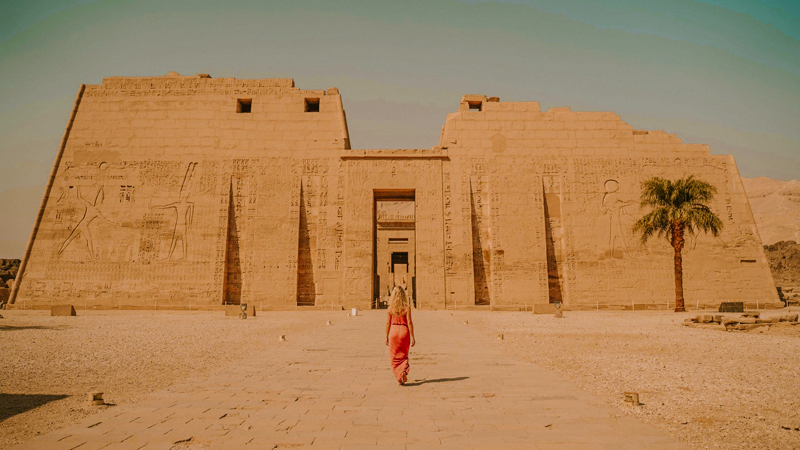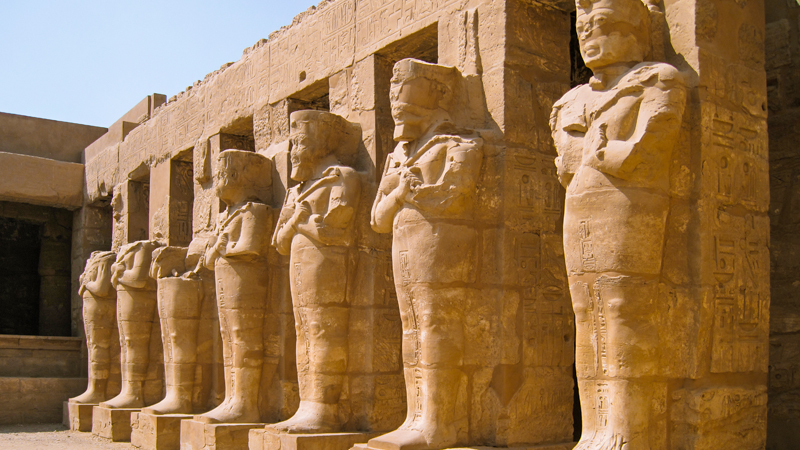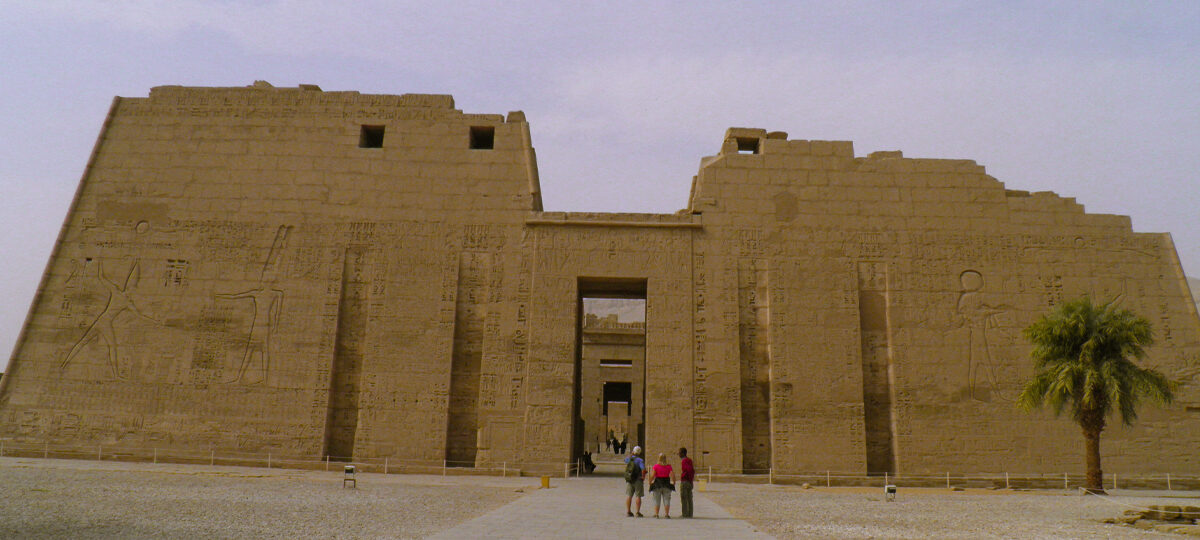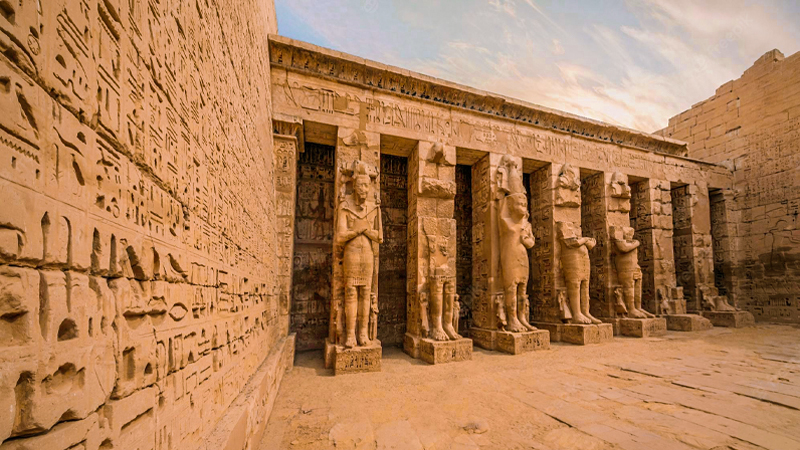Medinet Habu
A Brief History of Medinet Habu.
While it is not among the most well-traveled sites on the West Bank, Medinet Habu is considered by many visitors to be among the most impressive sights they see in Luxor. Based on its plan, this temple complex is impressively preserved, especially in comparison to the Ramesseum.
While the Ramesseum was built by a more famous pharaoh (Ramesses II), Medinet Habu, commissioned by Ramesses III, is a much more impressive sight with its tower and many of its walls still intact and much more of the original painting visible on its carved surfaces.
The best way to learn about the ancient Egyptian culture that thrived along the banks of the Nile is to take the Nile Cruises. So Don’t miss booking our Best Nile River Cruises

Temple of Medina Habu.
Ramesses III (reign 1184—1153 BC) was the last of the great pharaohs of Egypt. After his reign, Egypt began a long decline that led to it being ruled by foreign powers for most of its history after the New Kingdom. After the empire stretched to its furthest extremes under Ramesses II, the pressure of invasion threats from multiple frontiers eventually proved too much. Ramesses III was the last pharaoh to whom there are excellent building projects attributed, and this temple complex was the biggest of them.
Ramesses III’s Temple.

During his reign, Medinet Habu functioned as a walled city with a temple and an administrative center inside walls that protected the area’s inhabitants during hard times. Later on, the complex became a walled town for Coptic Christians living in the area.
The first impression of the temple is immediately imposing as you enter through a massive stone gate that seems out of place in Egypt. It is a Ptolemaic addition to the complex that hides the main feature of the complex behind it—the Temples of Ramesses III with its towering pylon with relief carvings still very well preserved, depicting the king defeating Egypt’s rivals from Libya and the Sea Peoples. The temples continue into several courtyards with well-preserved reliefs and columns, many with their coloring still intact, leading into a final hypostyle hall.
Facts about Medinet Habu and the tomb of Ramesses III.
- During later invasions of Egypt in the 20th Dynasty, everyone who lived in Thebes hid inside the temple’s massive walls.
- On the towers and walls of the temple, you can read about all of Ramses Ill’s military campaigns. In the second court, the colorful reliefs that show religious festivals are mostly still there. This is because the space was turned into a church by early Christians,
- You can find the ruins of Ramses I’s palace west of the first court. Hatshepsut built the enormous Temple of Mut, and Tuthmosis III added and changed it, but it was still used until the Roman era.
- Visit the most popular outdoor museum, anywhere on the first tower of the temple, and one of the many pictures of battles, parades, celebrations, and rituals inside the building. Some of the pictures are very dramatic, like charging chariots, fully armed armies, naval battles, prisoners with the name of the pharaoh written on them, or scribes counting mountains of severed hands and penises to figure out how many of the enemy’s soldiers were killed.
- Ramses III ordered the building of his tomb temple at Medinet Habu on the day he became king at Karnak.
- Ramesses III fought two defensive battles against the Libyans and one against the so-called People of the Sea. The Medinet Habu tells about many things during these three successful wars. Salvador Costa remembers that Ramses III’s battles were just defensive, even though he tried to make them look like Seti I or Ramesses II’s imperial expansion campaigns. He adds, “Some of the battles we see are real, and some aren’t.”
- The point of these and other pictures was to show that the pharaoh was the cosmic order (Maat) protector who kept the country safe from chaos and danger. From the scenes at Medinet Habu, historians can learn a lot about how the war was fought at the time and who Egypt’s enemies were.
- It’s one of the few buildings from ancient Egypt that still stands today, and because of how well the colors have been kept, you can still see works of art from the Pharaonic period.
Check Our Top Nile Cruise Trips:-


